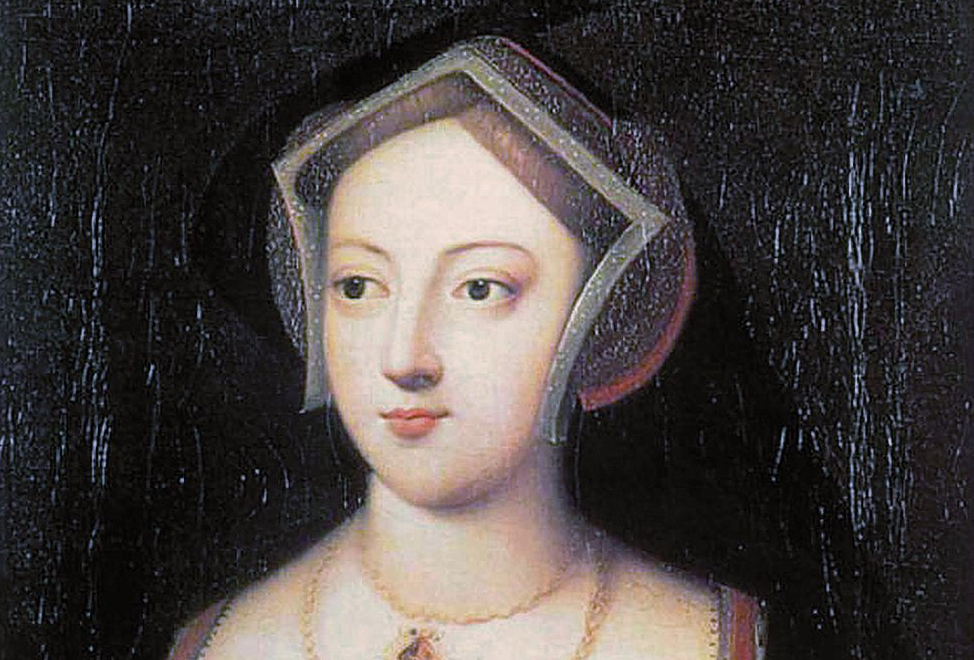
Mary Boleyn, known as Lady Mary, was born circa 1499 in Blicking Hall, Norfolk. She was the sister of the English queen consort, Anne Boleyn, whose family enjoyed a considerable influence during the reign of King Henry VIII.
[getty src=”463974025″ width=”398″ height=”594″ tld=”com”]Mary was the daughter of a rich diplomat and courtier, Thomas Boleyn, 1st Earl of Wiltshire, by his marriage to Lady Elizabeth Howard, the eldest daughter of Thomas Howard, 2nd Duke of Norfolk. Most historians believe Mary was treated as the eldest of the three surviving Boleyn children. In 1597, Mary’s grandson, Lord Hunsdon, claimed the earldom of Ormond on the grounds he was the legitimate Boleyn heir. Many ancient peerages can descend through female heirs if there is no immediate male heir.
If Anne was the eldest child of the Boleyns, this means the better claim to the title would have gone to her daughter, Queen Elizabeth I. However, it’s believed Queen Elizabeth offered Mary’s son, Henry, the earldom as he was dying, although he declined the offer. So if Mary was the eldest Boleyn sibling, Henry would have had the better claim to the title regardless of a new grant from the Queen.
During her early years, Mary was educated alongside her brother, George, and her sister, Anne, at Hever Castle in Kent. At the time, having a conventional education was deemed essential for young ladies of rank and status. Their education included the basics of arithmetic, grammar, history, reading, and writing. In addition to basic education, Mary learned feminine accomplishments, including needlework, dancing, and household management.
Mary remained in England for most of her childhood until she was sent abroad at the age of 15 in 1514 when her father secured her a place as maid-of-honour to the King’s sister, Princess Mary, who was going to France to marry King Louis XII of France. After a few weeks, the Queen’s English maids were sent away, but many believe Mary was allowed to stay because her father was the new English ambassador to France.
While in France, Mary embarked on sexual affairs, including one with King Francis. However, many historians believe the reports of the affairs are exaggerated as the French king referred to her as “The English Mare” and as “una grandissima ribalda, infame sopra tutte” (“a very great whore, the most infamous of all”). In 1519, Mary returned to England when she was appointed a maid-of-honour to Catherine of Aragon, the queen consort of Henry VIII.
Soon after her return, she married wealthy and influential courtier William Carey. Henry VIII was a guest at the wedding. Although no evidence supports the argument either of them was the King’s biological child, it’s rumoured that one or both of Mary’s children were fathered by the King. Henry’s wife, Catherine, had first been married to Henry’s older brother, Arthur, who was a little over 15-years-old. Arthur died a few months later, and Henry used this to justify the annulment of his marriage to Catherine, arguing the marriage was created as an affinity between the two when his brother died. Henry also requested a dispensation to marry Mary’s sister, Anne.
When Mary’s husband died during an outbreak of the sweating sickness, Henry granted Anne the wardship of her nephew, Henry Carey. Mary’s husband left her with considerable debts, and Anne arranged for her nephew to be educated at a Cistercian monastery. Her widowed sister was also secured an annual pension of £100.
In 1532, Anne accompanied Henry to the English Pale of Calais on his way to a state visit to France in which Mary was one of her companions. A year later, Anne married the King, and in 1534, Mary secretly married an Essex landowner’s younger son, William Stafford (later Sir William Stafford.) Since he was a soldier and his income was so small, many believe the marriage was on the grounds of love. When she became pregnant, the marriage was discovered. Leaving Queen Anne furious, the Boleyn family disowned Mary, and the couple was banished from the court.
Mary’s financial circumstances would become so desperate, she would beg the King’s adviser, Thomas Cromwell, to speak to the King and Queen on her behalf. Mary admitted she should have chosen a “greater man of birth”, but never anyone loved her so well. Mary asked Cromwell to speak to her father, uncle, and brother, but it was to no avail. Anne eventually relented and sent Mary a golden cup and some money but still refused to reinstate her position at court. This would be the closest the two would come to a reconciliation.
Anne was executed in 1536 after she was found guilty of adultery, incest, and treason. Mary’s life between 1534 and her sister’s death is difficult to trace. There is no record of her visiting her parents and no evidence of correspondence or visits with her siblings when they were imprisoned in the Tower of London. Mary died of unknown causes in 1543 in her early forties.

